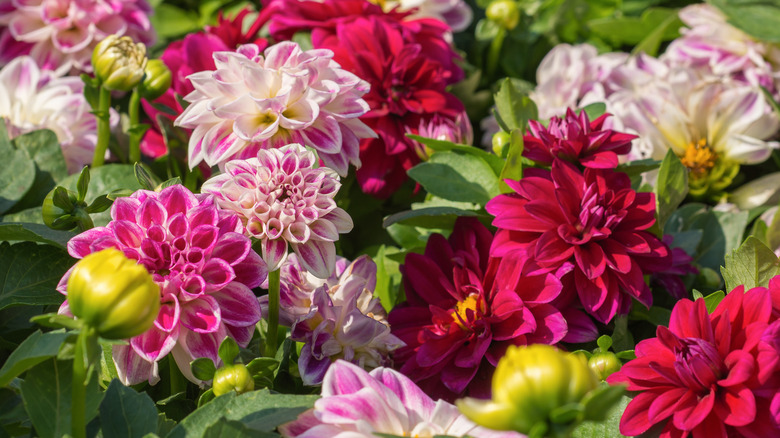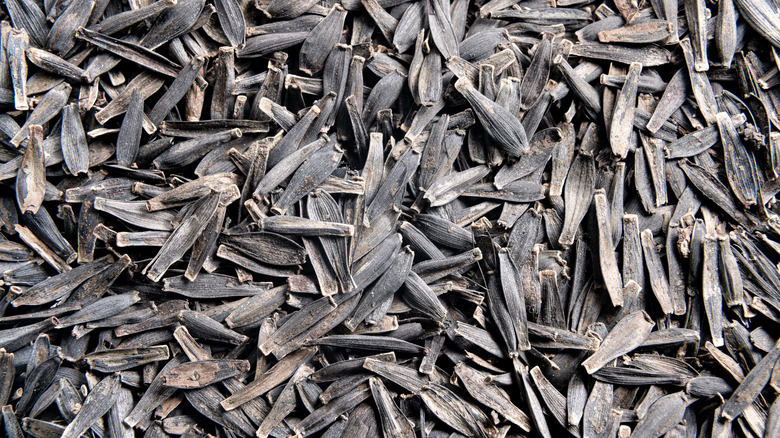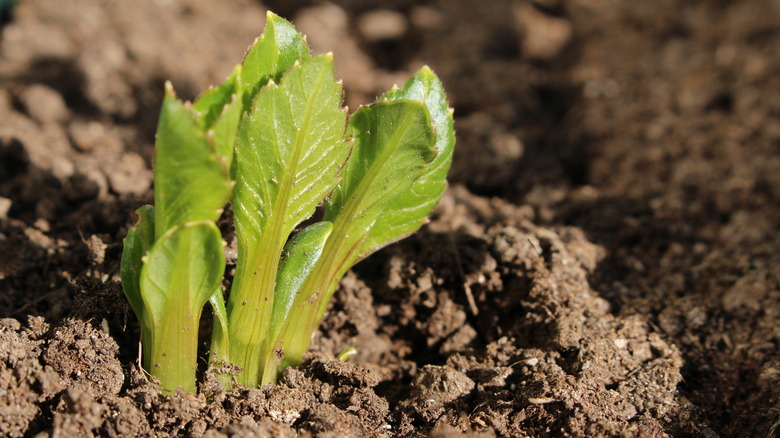The Dahlia Growing Technique That Will Give You More Variety And Beauty
Dahlias are stunning flowers that come in all shapes and sizes. Some look like daisies with flat petals, while others take on a spherical shape with many curled-up petals. All are stunning and deserve a place in the garden. If you like a specific type, you should plant dahlia tubers. Growing dahlias by seed won't give you the plants you're hoping for because they're hybrid flowers that won't produce true-to-type seeds. If you like a ball-shaped pink dahlia, the seeds it produces may give you flat petals in a different color. If you like to play around in the garden and try new things, throwing out a mix of dahlia seeds can lead to fun surprises.
Once your dahlia seeds grow, you can make sure you get the same flower next year by saving the tubers for replanting. You don't have to worry about losing your favorite dahlia when playing a game of "dahlia chicken" with seeds. Use seeds to experiment and play with color in your garden, and save the tubers to be able to replant the ones you love.
Dahlia seeds aren't true-to-type
Dahlias are hybrid flowers that are the result of two different parent flowers. Since the hybrid flower is a mix of the parents, they won't produce the exact same seed because they carry the traits of both parent flowers. It's a lot like human genetics; a blond-haired and blue-eyed parent and a brown-haired and brown-eyed parent may end up with a child with blonde hair and brown eyes, and their second kid may have brown hair and blue eyes. The children's children have the possibility of having traits of their grandparents.
Flowers may seem a little more complicated than humans because one dahlia seed may produce several types of dahlias that look nothing like the parent flower. (Whereas it's a little easier for humans to guess where those traits came from.) It's all about what's in the DNA, and it's virtually impossible to know the genetic history of the packet of dahlia seeds you planted. So be open to surprises when planting seeds, and make sure you save the tubers of your favorite blooms.
How to plant rainbows of dahlias
Dahlia flowers come in a huge variety of sizes and shapes. They can grow anywhere from 1 to 6 feet tall with flowers up to 1 foot wide. The flower heads come in warm tones like red, orange, white, pink, and yellow, with variants of each; sometimes, they're striped, and other times, the tips have different colors. Some are single-flowering with one row of petals, while others are double-flowering and have that iconic ball shape so many people are after when they grow dahlias. Regardless of what kind you end up with, you can grow seeds the same way.
The plants are sensitive to frost, so only plant seeds outdoors if spring temperatures don't go below freezing. Otherwise, start seeds indoors up to six weeks before the last frost date. Use a seed-starting soil to give them healthy, aerated soil that's easy for tender roots to grow through. Keep the soil moist as they grow. Once they develop their first true leaves, you can transplant them outside after the last frost. Plant them in a sunny location that will receive at least six hours of direct sunlight, and space the flowers 3 to 4 feet apart. You may want to use a stake to support each plant, as plants with large flowerheads tend to flop over. Keep the plants moist, and by early summer, you should have a rainbow of dahlias. Keep tubers of your favorites and save seeds for another surprise next year.


